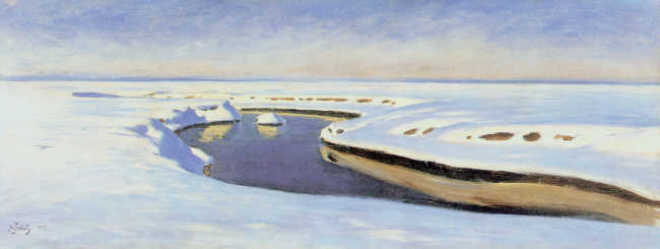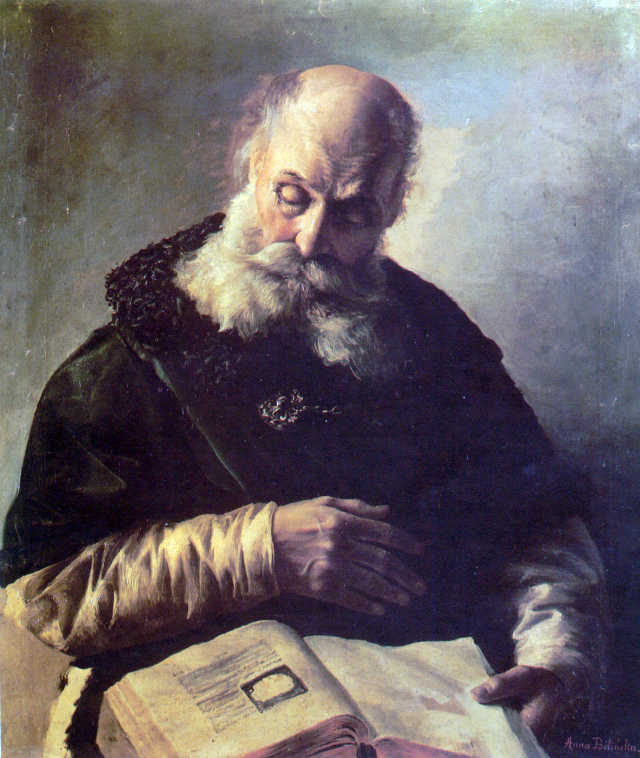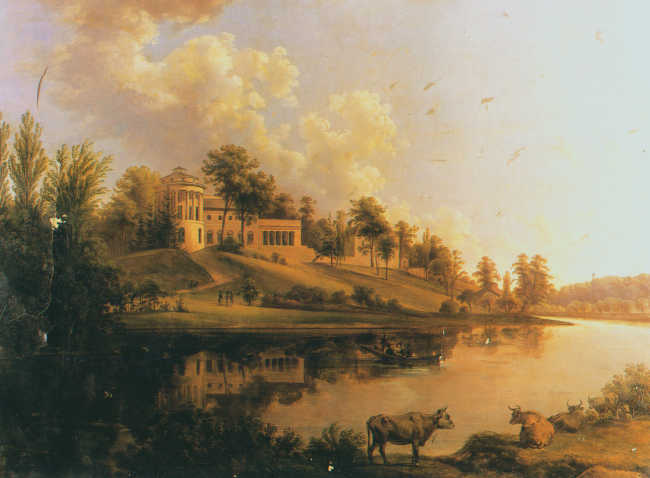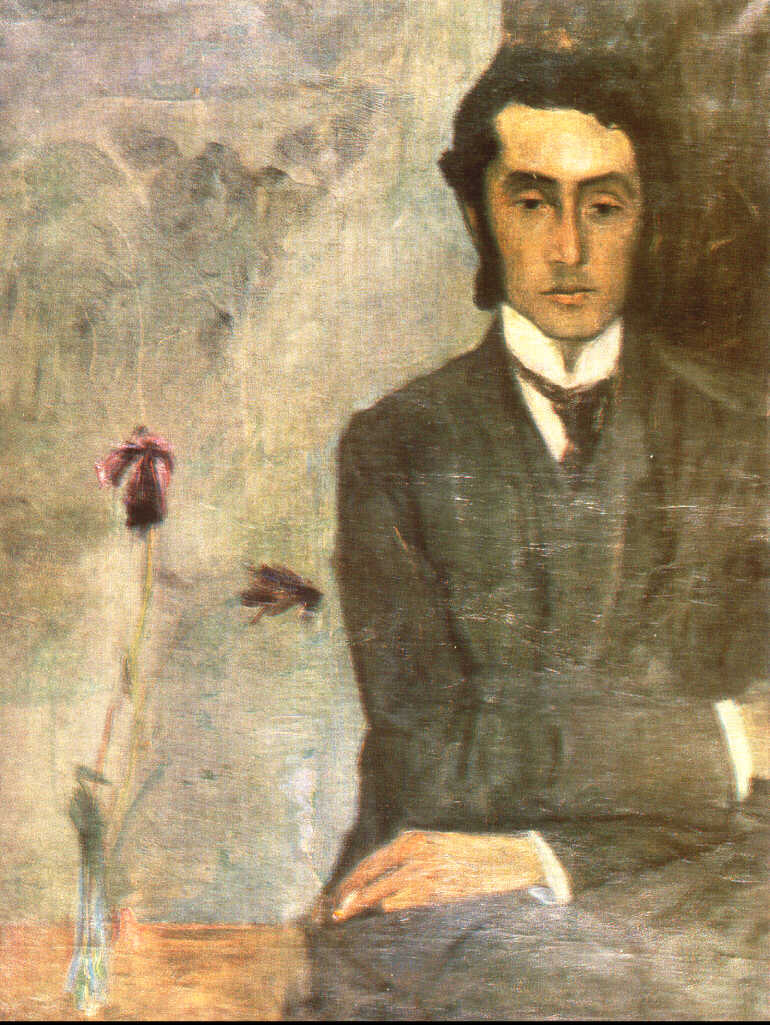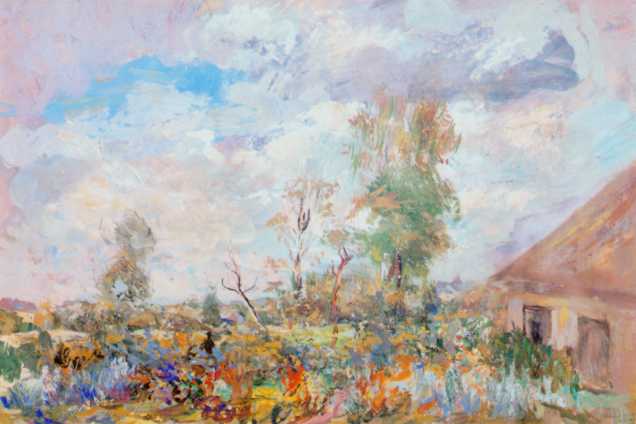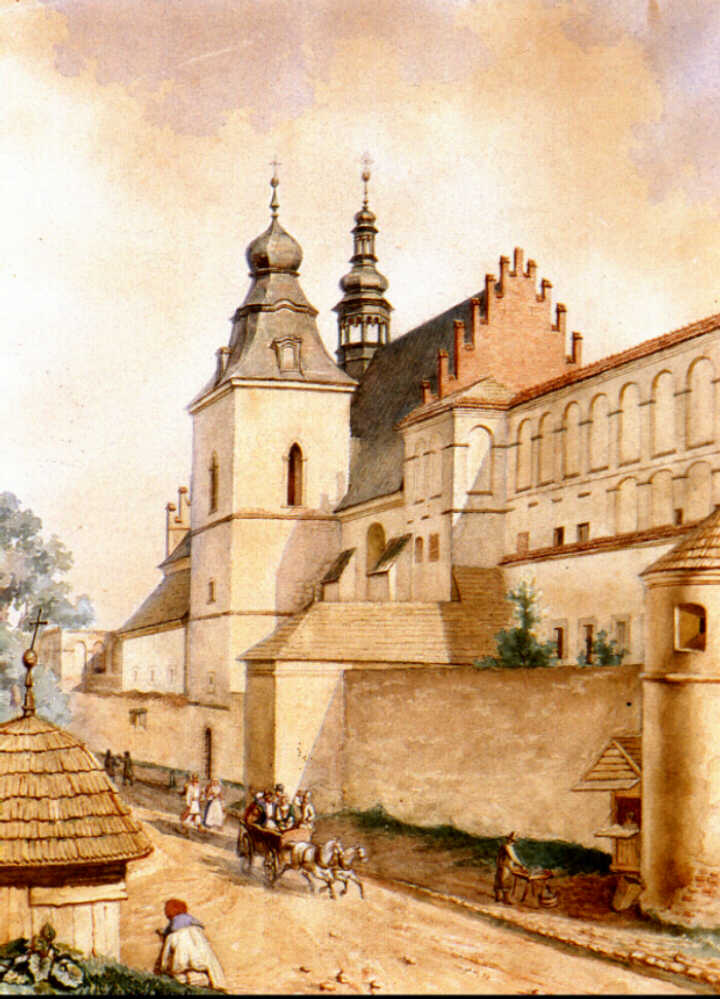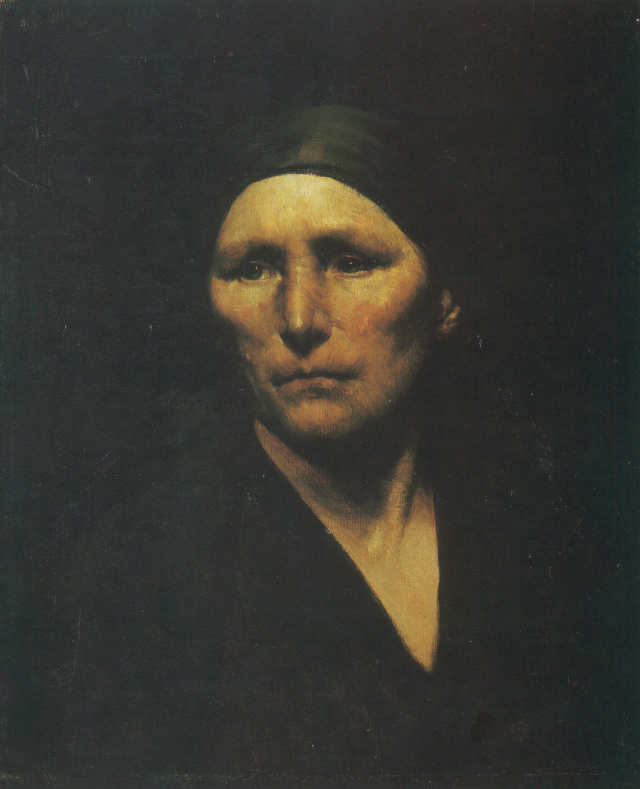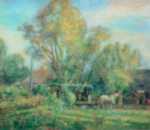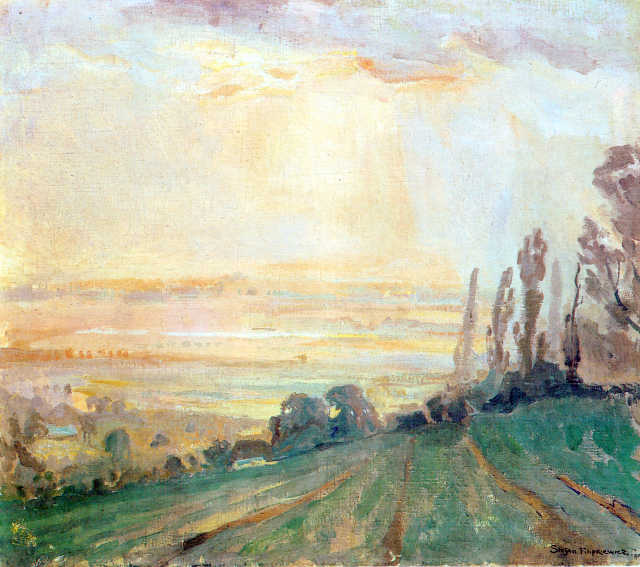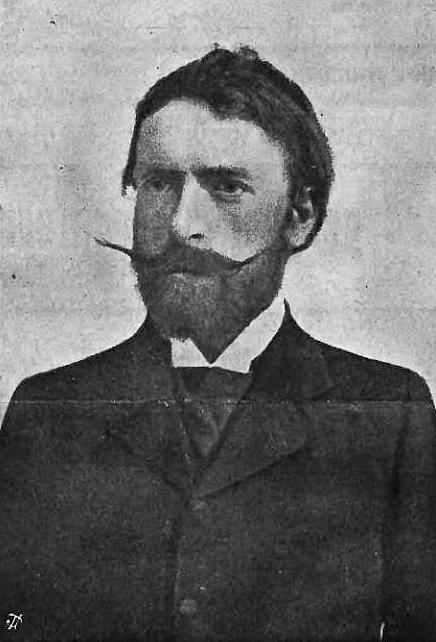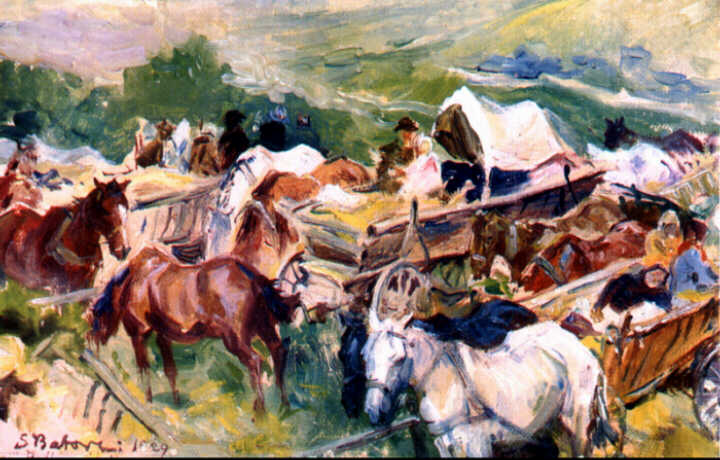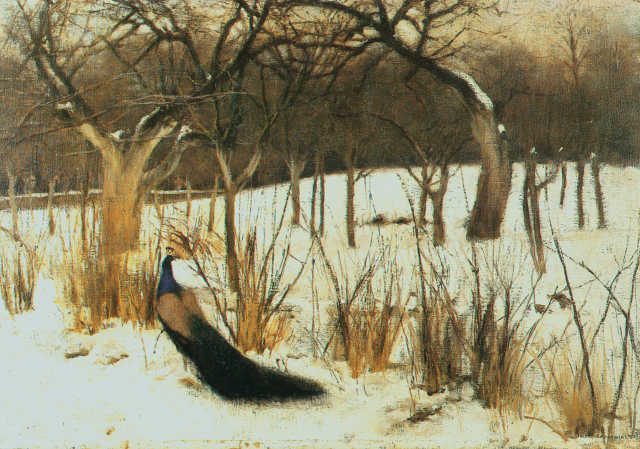Falat, Julian (ur. 1853 Tuligłowkal. Przemyśl, zm. 1929 Bystra k. Bielsko).
Julian Fałat was born 29.07.1853 r. In Tuligłowach, He died 09.07.1929 r. in Bystra (Silesia). In years 1864-69 he studied in a gymnasium in Przemyśl, and then he studied at the School of Fine Arts in Kraków under W.. Łuszczkiewicz and L.. Dębowski. (1870-71). In years 1872-73 he worked in Odessa for Gąsiorowski as an architect's assistant. From 1873 do 1878 he stayed in Switzerland and Munich, studying at the polytechnic and working on railroad construction. In years 1878-80 studied painting at the Munich Academy with A.. Strachubera i Raaba. Then he settled briefly in Warsaw (1881-1886), making numerous trips at that time (Italy, Spain, Near East, Ukraine, Samogitia, Lithuania). W 1886 r., after staging a series of watercolors from hunting in Berlin by Fr.. Radziwiłł in Niasvizh, he was appointed court painter of the hunting of Wilhelm II. He stayed in Berlin until 1895 r. He was the organizer of the Polish art section at the international exhibition in 1891 r. ; w 1893 was appointed a member of the Berlin Academy of Arts in the years 1894-95 started working with W. Kossak, J. Stanisławski i M. Wywiórski next to the panorama Passage through Berezina. In years 1895-1910 he was the director of the Krakow School of Fine Arts, which owes him the title of the Academy (1900), and above all, a fundamental reform of the study system. W 1897 became a member of the Society of Polish Artists “Piece”, taking part in almost all of its exhibitions in Poland and abroad. W 1910 he settled in Bystra, leaving her briefly in 1920 r. (stay in Toruń) i 1921 r. when he became director of the Department of Culture and Arts at the Ministry of Religious Denominations and Public Education. He has exhibited his works since 1878 at TZSP in Warsaw (from 1890 he was a member of the Society's Committee, w 1926 became its honorary member) and at international exhibitions, m.in. in Paris – 1879, Berlin – 1891, Munich – 1892, Dresden and Vienna – 1894, St. Louis – 1904.
He became famous mainly as a watercolorist (genre scenes, hunting, winter landscapes, views of historic architecture). He also made many drawings on similar topics to domestic and foreign magazines.
Julian Fałat was born 29.07.1853 r. In Tuligłowach, He died 09.07.1929 r. in Bystra (Silesia). In years 1864-69 he studied in a gymnasium in Przemyśl, and then he studied at the School of Fine Arts in Kraków under W.. Łuszczkiewicz and L.. Dębowski. (1870-71). In years 1872-73 he worked in Odessa for Gąsiorowski as an architect's assistant. From 1873 do 1878 he stayed in Switzerland and Munich, studying at the polytechnic and working on railroad construction. In years 1878-80 studied painting at the Munich Academy with A.. Strachubera i Raaba. Then he settled briefly in Warsaw (1881-1886), making numerous trips at that time (Italy, Spain, Near East, Ukraine, Samogitia, Lithuania). W 1886 r., after staging a series of watercolors from hunting in Berlin by Fr.. Radziwiłł in Niasvizh, he was appointed court painter of the hunting of Wilhelm II. He stayed in Berlin until 1895 r. He was the organizer of the Polish art section at the international exhibition in 1891 r. ; w 1893 was appointed a member of the Berlin Academy of Arts in the years 1894-95 started working with W. Kossak, J. Stanisławski i M. Wywiórski next to the panorama Passage through Berezina. In years 1895-1910 he was the director of the Krakow School of Fine Arts, which owes him the title of the Academy (1900), and above all, a fundamental reform of the study system. W 1897 became a member of the Society of Polish Artists “Piece”, taking part in almost all of its exhibitions in Poland and abroad. W 1910 he settled in Bystra, leaving her briefly in 1920 r. (stay in Toruń) i 1921 r. when he became director of the Department of Culture and Arts at the Ministry of Religious Denominations and Public Education. He has exhibited his works since 1878 at TZSP in Warsaw (from 1890 he was a member of the Society's Committee, w 1926 became its honorary member) and at international exhibitions, m.in. in Paris – 1879, Berlin – 1891, Munich – 1892, Dresden and Vienna – 1894, St. Louis – 1904.
He became famous mainly as a watercolorist (genre scenes, hunting, winter landscapes, views of historic architecture). He also made many drawings on similar topics to domestic and foreign magazines.
Portrait of a man with a pipe, 1881
watercolor, cardboard, 48 x 33,6 cm (in the light of the frame);
signed lower left: Jul Fałat | Industry | 81;
from the AGRA-ART Auction House catalog;
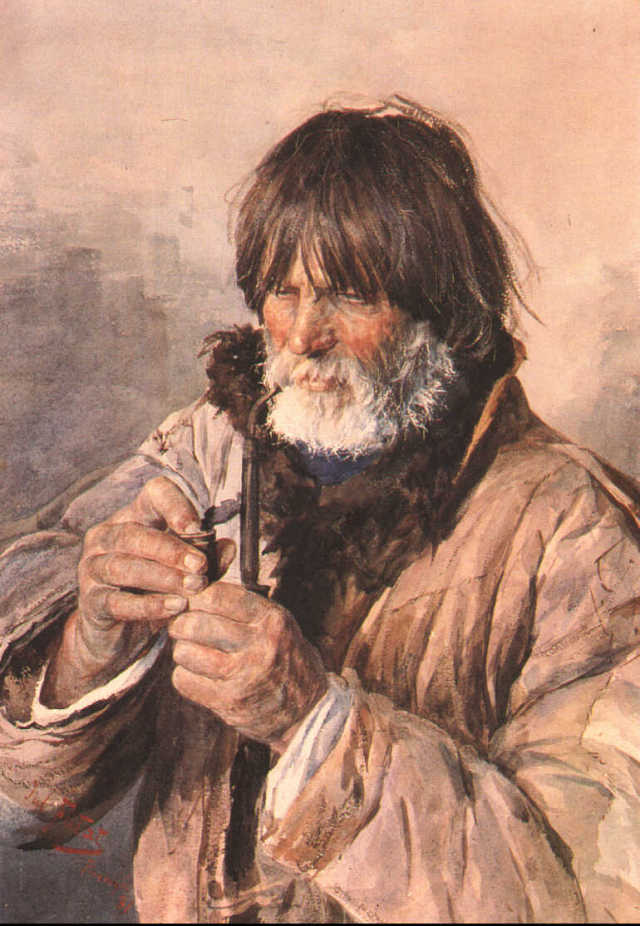
watercolor, cardboard, 48 x 33,6 cm (in the light of the frame);
signed lower left: Jul Fałat | Industry | 81;
from the AGRA-ART Auction House catalog;

Watercolor The man with the pipe is one of the few early works of Fałat known today, characterized by realism and meticulous performance, careful finish. The artist, with the help of different means, tried to achieve an effect similar to oil painting. Similar works exhibited in Krakow, in Lviv and Warsaw met with the attention and appreciation of critics.
Water landscape, 1893
watercolor, cardboard, 31 x 62 cm;
signed lower left: Jul Fałat 93;
from the AGRA-ART Auction House catalog;
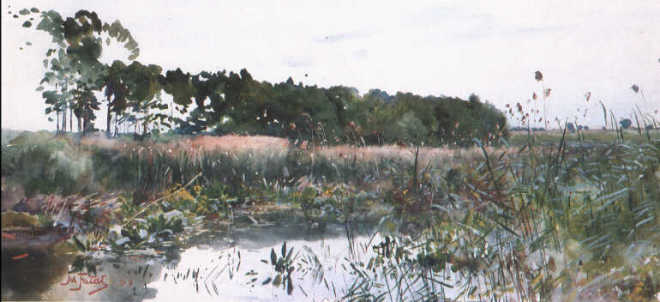
watercolor, cardboard, 31 x 62 cm;
signed lower left: Jul Fałat 93;
from the AGRA-ART Auction House catalog;

A masterfully painted landscape, in which the artist, different than in previous works, operates with a wider and more poured color spot, while using the natural whiteness of the paper.
The field in early autumn
oil, canvas, 30 x 90 cm; signed lower right: J. Falat 1909;
from the AGRA-ART Auction House catalog;
oil, canvas, 30 x 90 cm; signed lower right: J. Falat 1909;
from the AGRA-ART Auction House catalog;

Moody autumn landscape framed in a wide panoramic view, distinguished by the advantages of harmonious color combinations.
A stream in the snow, 1908
oil;
National Museum in Krakow;
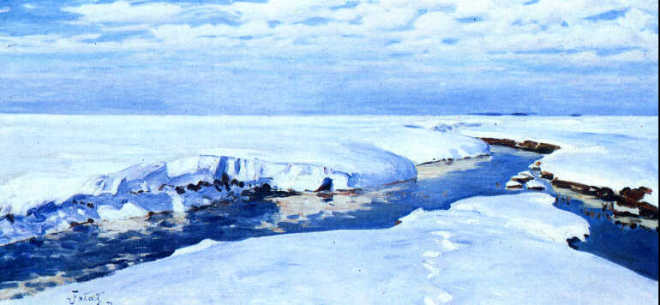
oil;
National Museum in Krakow;

Church in Osiek, 1906
watercolor;
National Museum in Krakow;
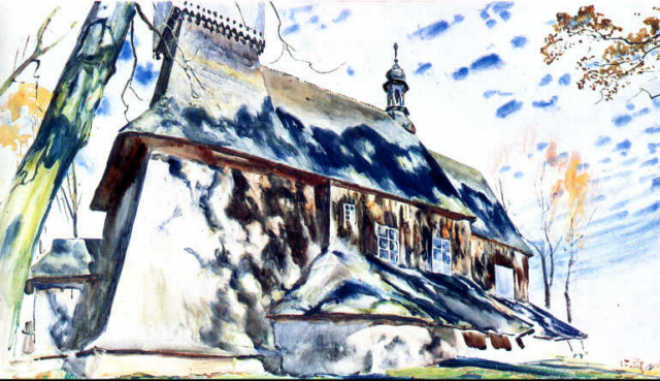
watercolor;
National Museum in Krakow;

Near the forest
oil, canvas on cardboard, 71 x 101 cm;
Lviv Picture Gallery;
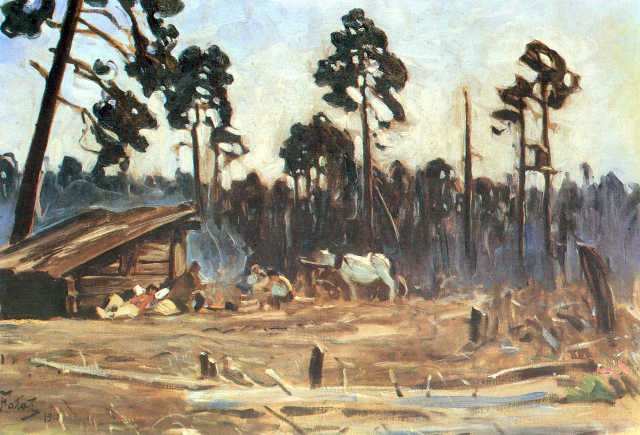
oil, canvas on cardboard, 71 x 101 cm;
Lviv Picture Gallery;

Snow
oil, canvas, 55 x 142 cm;
Lviv Picture Gallery;
oil, canvas, 55 x 142 cm;
Lviv Picture Gallery;
